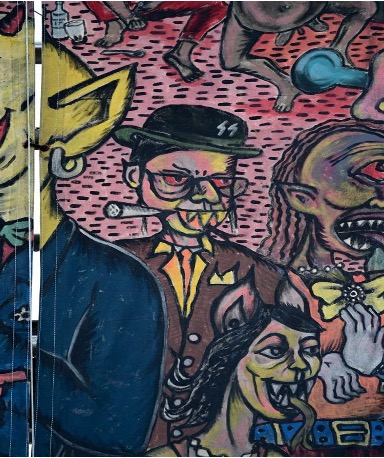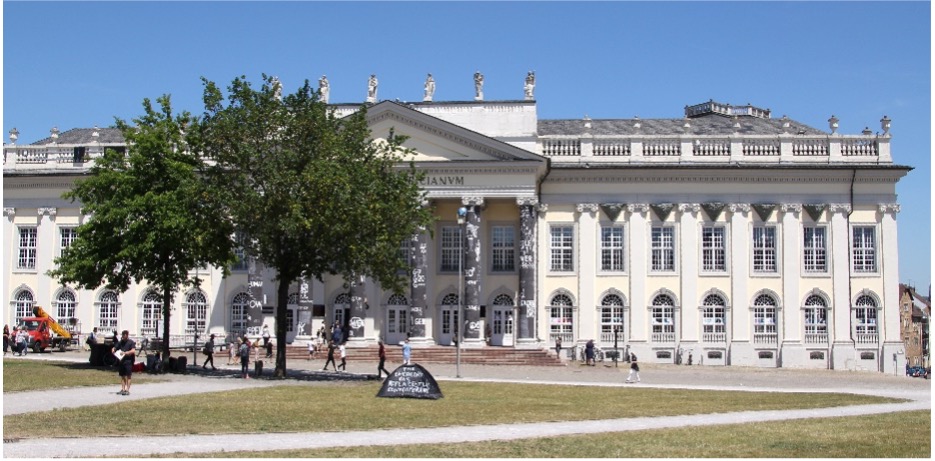Is Art Today Slowly Falling in the Vortex of Political Correctness?
The scandal that involved the 15th Documenta lifted a huge number of critiques and opened massive discussions about the freedom of art between artists and the public opinion.
What happened exactly? Just 4 days into the 100 – day show, the organizers declared that they would remove a piece of the exhibition because “triggers anti-Semitic readings”; the piece in question is called “People’s Justice” and was made in 2002 by the Indonesian Collective Taring Padi, portraying the difficult times that Indonesians had to face under the country’s military dictatorship. The artwork is not reserved for the country of Indonesia solely, but it’s more in general a denunciation of oppression that people have to face because of the world’s governments decisions, and it’s related to militarism and violence. The core idea of the artwork is, indeed, representing oppression in every form.

What caused the scandal was the presence of two particular characters presented in the art work: one of them was a man with side – locks and fangs wearing a hat emblazoned with a Nazi emblem, the other was a soldier with pig’s head, wearing a star of David and neckerchief and a helmet with “Mossad” written on it. It’s quite obvious the reason that caused the dispute: the artwork was considered offensive and carrier of old stereotypes about Jews; in response to the art piece, Israel’s embassy in Germany stated that Documenta was promoting a Goebbels – style propaganda and later, Germany’s culture minister Claudia Roth joined the critiques stating that to her, this is an anti-Semitic imagery. People’s Justice was removed, but this decision left a mark on the public opinion’s beliefs, polarizing the society between who believed that taking down the project was a good decision and those who thought this was an act of censorship.
Let’s take a step backwards first: this year’s exhibition was curated by the Indonesian art collective Ruangrupa and the idea of the exhibition was to set a different focus, instead of concentrating in the western hemisphere, the focus should be put on artists from the global south. By doing so, I think it’s important not to forget that other countries and other cultures have different sensitivities, and loaded topics in Germany might not be considered as much sensitive for other countries; furthermore, giving the internationality that Documenta has reached in the past decades, I believe that it is important to keep in mind that the exhibitions should be seen through different lenses and not through German eyes only. Back to the starting point, we said that the decision to take off the artwork from the exhibition polarized the public opinion, but the drop that broke the pot was the decision taken by Metrum to create a code of conduct to apply for the next exhibitions, to avoid other “incidents”. The decision was not accepted by many people, especially artists, whom are afraid that this measure will limit their ability to express their art completely.
The debate on what could and could not be exposed in a museum is a sensitive topic, and it’s up to the artist to understand when something could be considered offensive or not: probably the Indonesian collective should have thought that in a country like Germany, a clear exposition of Jewish characters would have been seen differently compared to them considering the country’s past. At the same time, if we stand with the censorship mind-set, the collective couldn’t have exposed publicly their perspective about the Israeli government and to me, this concept of hiding your thought from your artwork because it might not be liked by someone tends to be a wrong move. Personally, I believe that there should not be set any line or any restriction on art because it could be used as a powerful tool to initiate dialogue and create public debate, which is precisely what People’s Justice (which is the name given to the artwork) did; this is why I agree with the #standwithdocumenta initiative. The artwork from the Indonesian collective, as we said before, has the purpose of showing what oppressive governments do to people, and it’s not unknown that the Israeli government adopted a harsh behaviour towards Palestinians during the decades, so the critic is not towards the Jewish community or the religion itself, but against an oppressive government.
The problem here is obvious, where do we draw the line between freedom of expression and human dignity? When does art become too much? Article 1 of the German constitution states that “Human dignity shall be inviolable […]” which means that freedom of expression finds its limits in denigrating someone’s personal dignity. On the other side, article 5 of the German constitution states that “art and sciences, research and teaching should be free. […]” which, on the contrary, means that there should not be any restrictions on what artists make and teachers teach. These two articles seem to be contradictory, but the constitution also provides another important tool called Wehrhafte Demokratie (defensive democracy): this tool is used by the German courts to limit someone’s freedom of speech (or art) to save the main right provided by the constitution, which is human dignity (article 1).
Wehrhafte Demokratie demonstrates that closing up the artwork is actually a legal way to protect a community’s dignity and therefore, cannot be changed. However, this doesn’t mean that it cannot be criticized: as I said before, the artwork could have been a fantastic way of creating a discussion not only to reflect the Israeli government’s behaviour today, but also to reflect on the thin line that separates freedom of speech from the violation of human dignity but unfortunately, to me, the decision to take it down shows that institutions prefer putting on a patch instead of trying to initiate a deeper and more mature dialogue between people.

